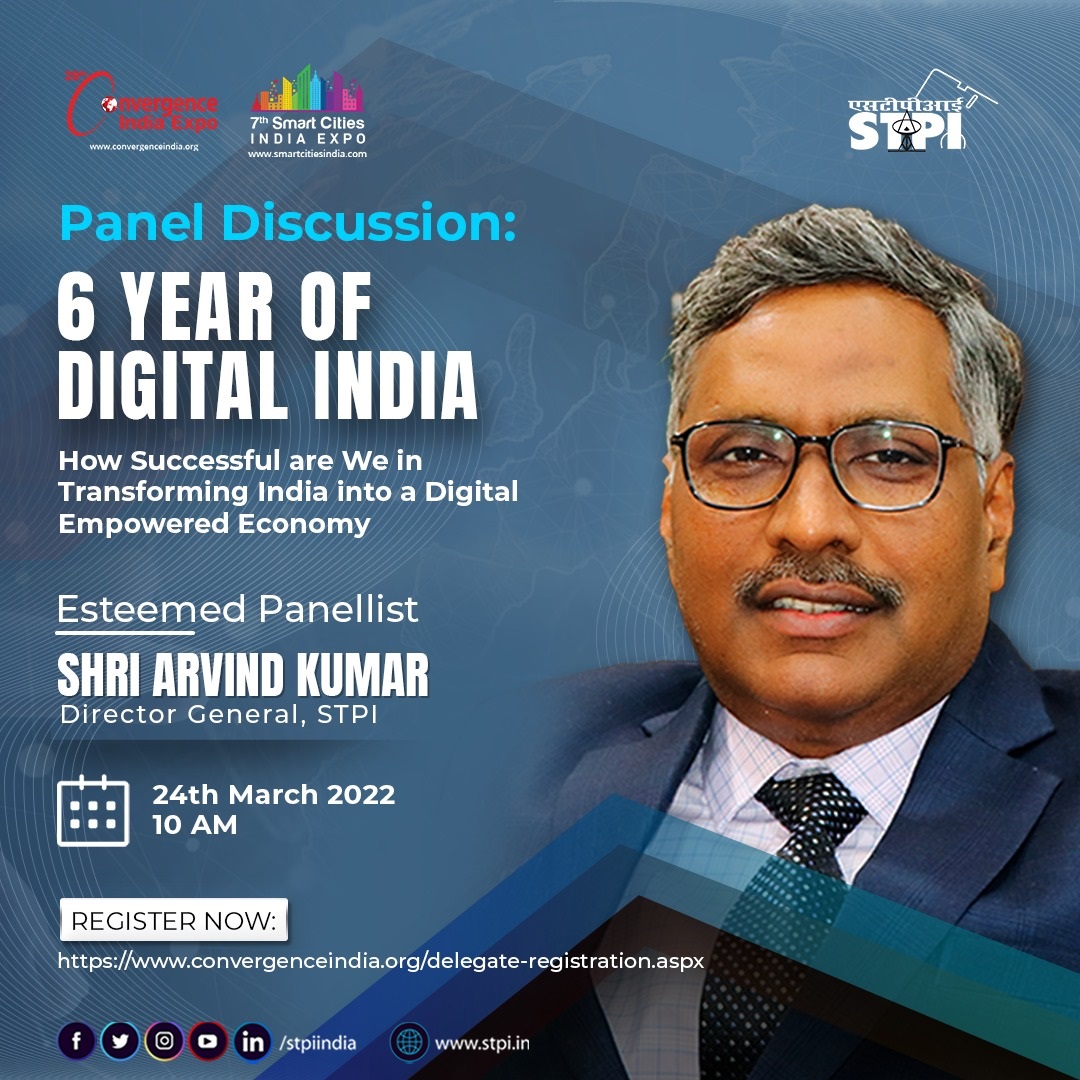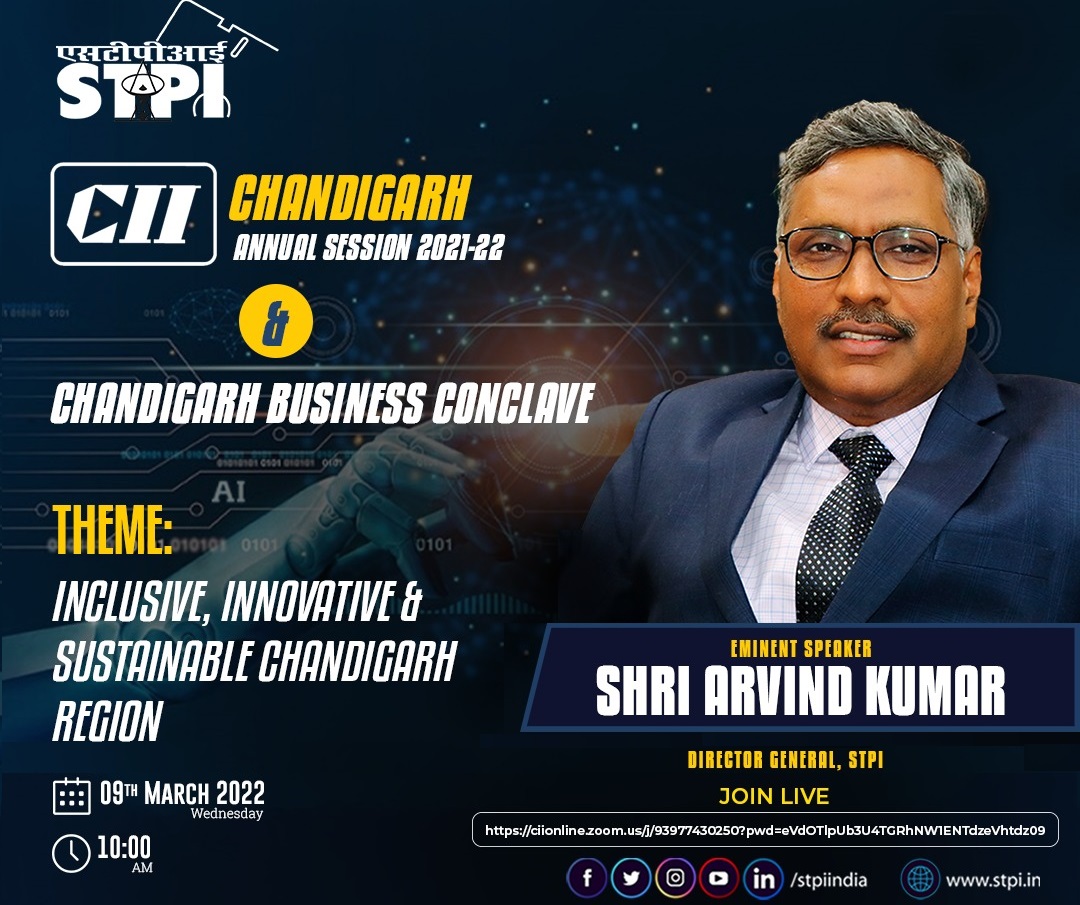Software Technology Parks of India (STPI), under the administrative control of the Ministry of Electronics and IT (MeitY), promotes innovation and research and development (R&D), and is eyeing to increase data centers footprint in India. In an interaction with ETTelecom's Muntazir Abbas, STPI Director General, Arvind Kumar speaks on Center for Entrepreneurship and EMC 2.0 schemes, and said that the organisation is planning to set up new data centres. Edited excerpts.
What are STPI objectives, and your focus areas?
STPI basically started with the concept of Softex form. In the IT/ITes industry , if they want to export the software, they need some certificate by which they can export the software and legitimize the money which is required by the Reserve Bank of India (RBI). We provide a one-stop solution. Now, our focus is more on the Center for Entrepreneurship. So, we are developing the Center of Entrepreneurship all over the country. We have planned 25. We have done the 20th one in Lucknow, which is called MedTech on medical products. So, all Center of Entrepreneurship are domain specific.
Do you have any timeline for that?
I think by the end of this calendar year, we will be able to complete 25.
What is the industry's and the Ministry of Electronics and IT (MeitY) role in driving this?
So, there are two schemes, one is directly the Center of Entrepreneurship (CoE) which is being driven by the STPI. This model is basically industry-driven, we got some partners in the form of let us say state governments. We appoint a Chief Operating Officer (COO) there. He undertakes the day-to-day activity of the CoE. So, we are not intervening day to day. We just established it, arranged the fund for them, arranged the equipment and they are working independently. So, anybody who wants to do some sort of startup in medical electronics or health informatics, they can get the incubation space there and they can start it. So, all Center of Entrepreneurships are domain-specific like we are planning one on blockchain technology in Gurgaon. We have eight CoEs in the Northeast, a combination of that is called Octane.
Apart from this, MeitY also has some plans for the Center of Entrepreneurship, it is called NGIS (next generation incubation scheme) that is fully funded by MeitY.
How is this different from CoE?
This is different from CoE. In the NGIS scheme, MeitY has said that they want in Tier2/Tier3 cities like Prayagraj, where the government has given some Rs 90 crores to STPI. MeitY has also asked to give seed funds to the innovator. So we also provide Rs 25 lakh as a seed fund to them. So, this model is the same, but the funding scheme is different.
But how much total outlay for the CoE?
Every CoE has its own budget. On an average we can say it is somewhere around 15 to 20 crores for five years.
Following the recent budgetary proposals that also talks about digital currency, how are you focussing on blockchain?
We have some programs called Chunauti 1.0, Chunauti 2.0. It's called an open competition program. So, we continue to have the competition program and these people come to us, give us presentations for pitching so they pitch. We have state level and Central committees and they have to pitch in their project.
Now the digital currency is the new concept. If anyone comes to us, and says, as a digital currency, this is their product. And we see this is in line with the government of India's objective and if this will result in something which is required for the country then, we allow it and handholding is done by us. We just look into whether its ideas are workable. Blockchain is the technology which is good for trusted networks or for making something which is called, the ledger technology. It can also be used very much in the FinTech domain.
How is EMC 2.0 different from the previous version?
EMC 1.0 was a little limited, so we have increased the scope in EMC 2.0 . In EMC 2.0, you can work somewhere outside. So usually, in the EMC 1.0, private players and small units were present, but in EMC 2.0 they have ensured that only the government bodies (public government venture) but there has to be some involvement of the government out there. In EMC 2.0, at least 10 to 20% of the entire place has to be taken up by a bigger unit and only if that unit is there, only then will we allow it.
How many such clusters are there currently?
In EMC 2.0, we have two such clusters already approved with a proposed area of around 1,000 acres and the cost of that will be around Rs 1,400 crores. That will be the development cost. Then the units will come, they will do their own investment, the anchor unit will come.
Where are these two clusters?
These clusters are Haryana and other in Andhra Pradesh, Vizag district. Three applications which are in the pipeline and in the process of approval are from Telangana, Uttarakhand and Maharashtra. We have also received four more applications from Himachal Pradesh, Tamil Nadu, Karnataka and Bihar which are in the process of submitting it. So, there is a traction around that and we are ensuring that there has to be a very clear-cut success criteria only then governments spend their money out there.
So the government is also giving subsidies?
50% of their development cost will be borne by the EMC.
What are your data centre plans?
We want to increase our footprint in data centers actually. Something we want to do in the data centers. We have data centers at four places- Chennai, Bangalore, Bhubaneshwar, and Mohali. We have a mid-sized or even a small sized data center, but we want to increase our footprint there and that is one thing which we are looking at immediately.
What are these incubation centers?
These centers mean we have incubation space there. Any young innovative entrepreneur if they want to develop software, they want 5-10 seats, like 5-10 workstations, we provide that space to them at a very nominal rate. So, let us say 2000 rupees per month per seat where you will have electricity, water, everything, so they can come, develop their software and start their company so, if you require a 8-10 workstation for starting company then you're not required to take a big space, pay the rent, electricity, lot of other problems. So, you will have ready-made built-in space and you will just come. It’s called Incubation Center, we call plug and play centres.
So, 62 you already have?
We have 62 centres and 22 are in the pipeline.
3 new electronic clusters proposals under consideration: STPI chief
"Three applications have been received for setting up electronic manufacturing clusters (EMC) in the states of Telangana, Uttarakhand and Maharashtra which are being reviewed for approval," Arvind Kumar, director-general, Software Technology Parks of India (STPI) said, adding that states such as Himachal Pradesh, Tamil Nadu, Karnataka and Bihar are in the process to apply for the Central scheme.






